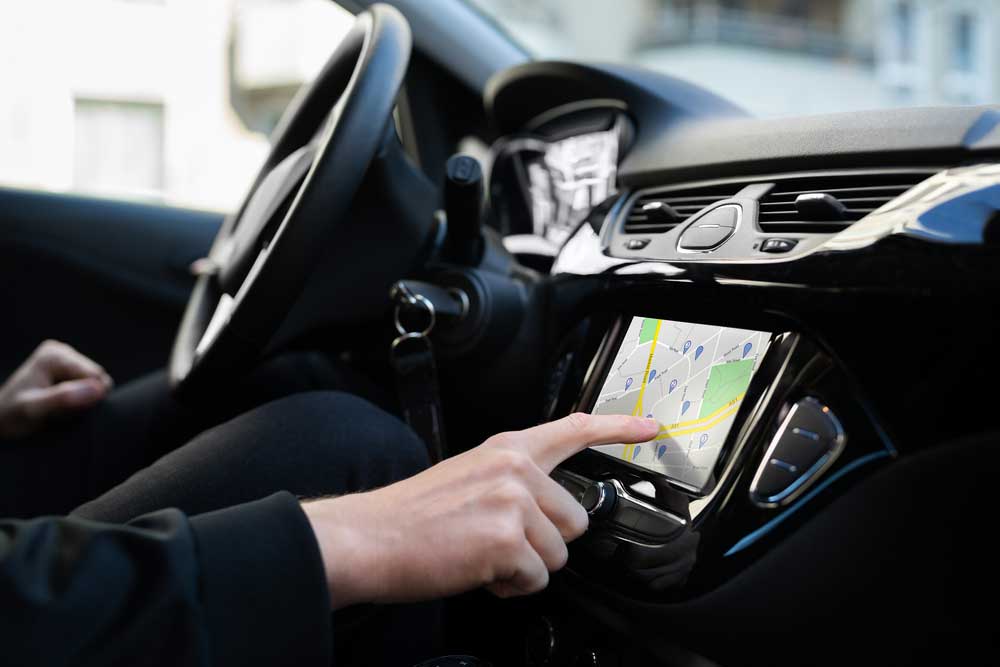How Many GPS Satellites Are There? It’s a question few ever ask themselves. Most people don’t even know how GPS works. The complexities of this incredible tool escape them. If you’ve ever wondered how many satellites make up the global positioning system, this article is for you. Today you’ll learn about GPS satellites, how they work, and what it takes to keep them running.
Table of Contents
- Where Are GPS Satellites Located?
- How Many Satellites Does GPS Use?
- What Are the 5 GPS Applications?
- What Are Some Gps Alternatives?
- FAQs
- Conclusion:
Where Are GPS Satellites Located?
The medium earth orbit (MEO) is where GPS satellites orbit at an altitude of approximately 20,200 km or 12,550 miles. Every satellite circles the earth twice a day. From here, the constellation transmits radio signals to users.

Radio towers for transmitting signals
A minimum of 24 satellites remain operational 95% of the time, thanks to the commitment of the U.S. government. Therefore, the part of the GPS called the space segment is the most crucial part of the network. If it ever went offline, global operations across various sectors would get disrupted, costing billions, potentially trillions of dollars in losses.
How Many Satellites Does GPS Use?
So, how many GPS satellites are there? Before we answer that question, you must first understand how GPS constellations work. Six equally-spaced orbital planes in the GPS constellations surround the earth.
Currently, GPS systems use 31 satellites, with 24 remaining operational around the clock. What’s more, the system, known as the “Expandable 24,” was introduced in 2011 by the U.S. Air Force and got maintained by the Space Force.
What Are the 5 GPS Applications?
Location
GPS’ primary application is location services. At some point, you’ve used GPS to determine your location, such as when you’re on a run, a hike, or driving in an unfamiliar area.

Using car navigation and tracking maps
Navigation
This is another common application of GPS. Think of apps like Google Maps, Apple Maps, and others.
Mapping
GPS helps with mapping as well. All modern maps use GPS, covering vast areas in a short period.
Tracking
GPS tracking features work in cars, ships, and electronics. Furthermore, they help businesses keep track of cargo and aid law enforcement in tracking stolen items.
Timing
GPS satellites give precise timing, regardless of your physical location. It is because of their highly accurate atomic clocks.
What Are Some Gps Alternatives?
GLONASS
GLONASS is Russia’s global navigation system, built to rival the American GPS. It’s remained active since its introduction in 1995. Today, many GPS receivers can pick up on GPS and GLONASS signals. However, unlike the American system, GLONASS uses 24 satellites instead of 31.
BeiDou
China rolled out its BeiDou system in 2000. Initially, BeiDou only had two satellites, severely limiting the accuracy and efficiency of the system. However, between 2012 and 2015, China launched 10 and 15 satellites, respectively. Today, BeiDou is almost tied with GPS when it comes to coverage.

Satellite signal receiver over the city
Galileo
The European Union launched Galileo in 2016. This constellation currently has a network of 22 satellites online. It is a global system similar to GPS and GLONASS. Equally important, the EU aims to increase the number of satellites to improve coverage and accuracy.
NavIC
India’s NavIC is one of the newest GPS alternatives. This system isn’t global and can only cover the regional territory. Though still in its infancy, NavIC is a promising alternative to GPS and could rival it in a few years. NavIC is more accurate than GPS terms of accuracy. In addition, its satellites are almost always in direct line of sight with the Indian region.
FAQs
Can GPS Work With One Satellite?
GPS receivers must link with a minimum of three satellites to identify your location and track movement. 2 satellites determine latitude and longitude. At the same time, the third sends the signal to the receiver.
How Many Satellites Do You Need for GPS?
GPS requires four satellites to function optimally. Three satellites determine the earth’s position, and the last adjusts for potential errors in the GPS receiver’s clock.
How Does GPS Work Without the Internet?
Because GPS satellites constantly orbit the earth, your device always receives signals throughout the day. So even when you don’t have data enabled, your phone can still pick up on the signals and determine your location.

Smart city with the wireless communication network
Conclusion:
GPS technology is a fascinating thing. A few dozen satellites are responsible for most of the world’s timing, location, and navigation services. From chipping pets and delivery trucks and taxi cabs to military surveillance and crop surveying, the uses of GPS systems are limitless.
The development of alternatives only improves this utility.

Surveillance operating with crowded people in the background
First, it creates healthy competition and gives people in other parts of the world a dedicated, reliable global navigation system. Humanity continues to make leaps and bounds when creating unique solutions to specific problems. Furthermore, global positioning systems are no different.
